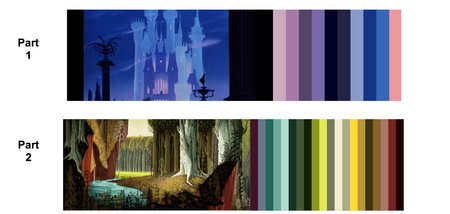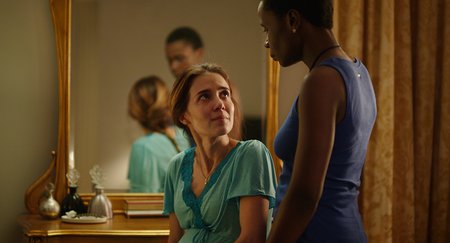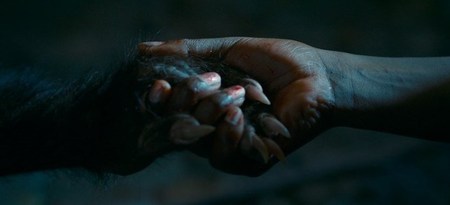Rotterdam 2018 Interview: "Out-of-the-Norm Family Was an Important Part of Our Story" Juliana Rojas and Marco Dutra Discuss Heart-Warming Fantasy Horror Musical GOOD MANNERS

Brazilian writing-directing team Juliana Rojas and Macro Dutra have been working together for over a decade, including on their feature debut horror drama Hard Labor. After pursuing solo careers, they rejoined forces once again for impressive fantasy horror musical Good Manners (read the review), winning the special jury prize at Locarno last year. The mesmerizing LGBT fable bridging race, class, normativity and genres also screened at IFFR, in the freshly resurrected genre section Rotterdamerung. ScreenAnarchy got chance to talk to the writing-directing duo about the story´s inception, art design, and its inspirations.
ScreenAnarchy: Good Manners has several different layers verging on genre fiction and drama. What was the point zero when you started working on the story? Was it drama of class, race and desire or the werewolf horror element?
Juliana Rojas & Marco Dutra: The story was born of a dream that Marco had in which two isolated women took care of a strange, monstrous baby. From that image we started developing the story. The werewolf myth came into it quickly because of its very nature: the idea of contrast, of man and beast, civilization and instinct. As the characters of Clara and Ana took shape, the contrast between the two of them also became central to the movie, and we found ourselves discussing the themes of motherhood, class, desire, and the nature of love.
Are you genre fans?
Yes. The love for genre was one of the things that first approached us when we met in film school. Not only horror and thrillers, but also comedies and musicals. We grew up watching these kind of movies – lots of them North American movies – so it was natural that they would become an inspiration for our work. But we are never too specific with references or paying homage to the genre in our films. The influences are there because they are a natural part of us. But all our discussions are about character, theme, meaning – much more than about the specific forms of storytelling.
Did you know you wanted to interweave drama and genre fiction? How did that go in the writing process?
We always felt this film would be more connected to its genre than Hard Labor was. We wanted it to be a fantasy from the beginning – a gothic fairy tale. Some other genre elements, like the humor and the musical moments, came naturally as we wrote and rewrote the screenplay. The only song that was present from the beginning in the script was the Hunger lullaby theme. The first part of the film is more mysterious and less explicit, but even there we wanted the fantasy elements to be quite present – even the design of the opening credits should let us know early on that we are walking into a fantasy.
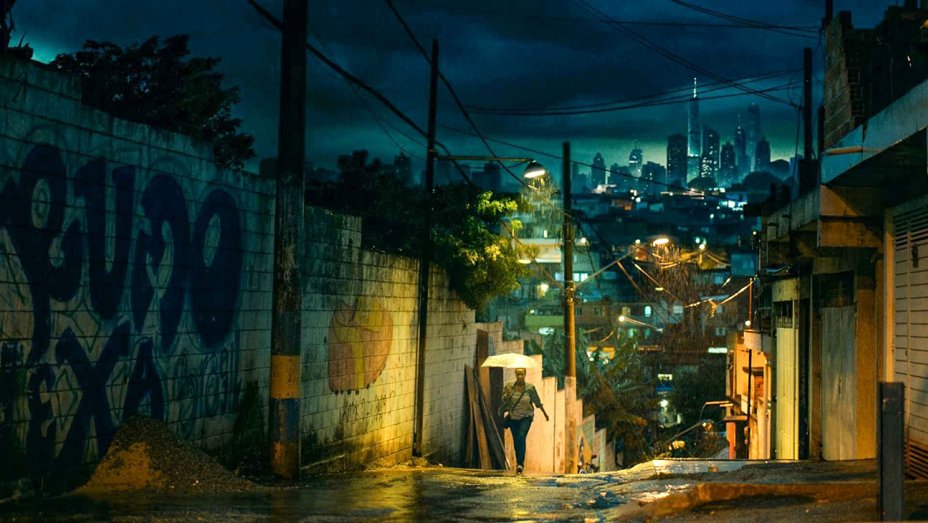
You also managed to combine various and different elements, horror and musical, psychological and social drama and genre and even animation, coming-of-age and fairy-tale. How did this process go and how did you find out which formal aspect you need for you story?
Like we said, the form came from the discussions about the characters and the story. We had a very strong feeling that this film should take place in the realm of fantasy, in a version of São Paulo that is slightly dreamy and surreal. So that opened a lot of doors for us to use the genre tools with freedom – in other words, we felt very adventurous. But everything came naturally, we never forced anything into the film. We must say some of the work of Walt Disney was very encouraging for us. It was, of course, part of our cinematic upbringing; but it’s also adventurous and daring: isn’t Snow White a horror animated psychological coming-of-age musical fairy tale about envy?
Were there any other formal aspect that you eventually decided to drop either during writing, production or in the editing room?
In the case of this film, we felt an enormous sense of formal freedom. Most of the ideas and tools that we felt like using ended up being in the final film. One big change that happened during writing was the decision to revise Ana’s character as a more modern country girl. In the first draft her universe was more conventionally gothic and dark, as she lived in an old and decadent building in the center of São Paulo. That change happened during the script revisions. Much later, in the editing process, we cut a song that appeared in the first part of the film – a “work song“ sung by Ana and Clara in the beginning of their professional relationship. We felt it was neither necessary nor right for the main characters to sing so early in the film.
Good Manners has saturated colors and some of the production designs seem stylized as the impression of São Paulo. What was your approach towards the visual style?
We wanted the visuals to reflect the tone of the story, which we felt as a fairy tale or folklore tale told in contemporary times. So both Rui Poças, our cinematographer, and Fernando Zuccolotto, our production designer, worked together to make it possible. See the color palette Fernando made after our discussions about the idea of duality between center and periphery.
One of the big challenges was the use of the old school technique of matte painting, in which a part of the shot is hand-drawn. Brazilian artist Eduardo Schaal made all of the matte paintings of the movie, around 35 of them. The aim was to create this alternate version of the city of São Paulo – all the elements can be recognized and linked to reality, but the lack of realism of the drawings helps to put us in the world of fantasy.
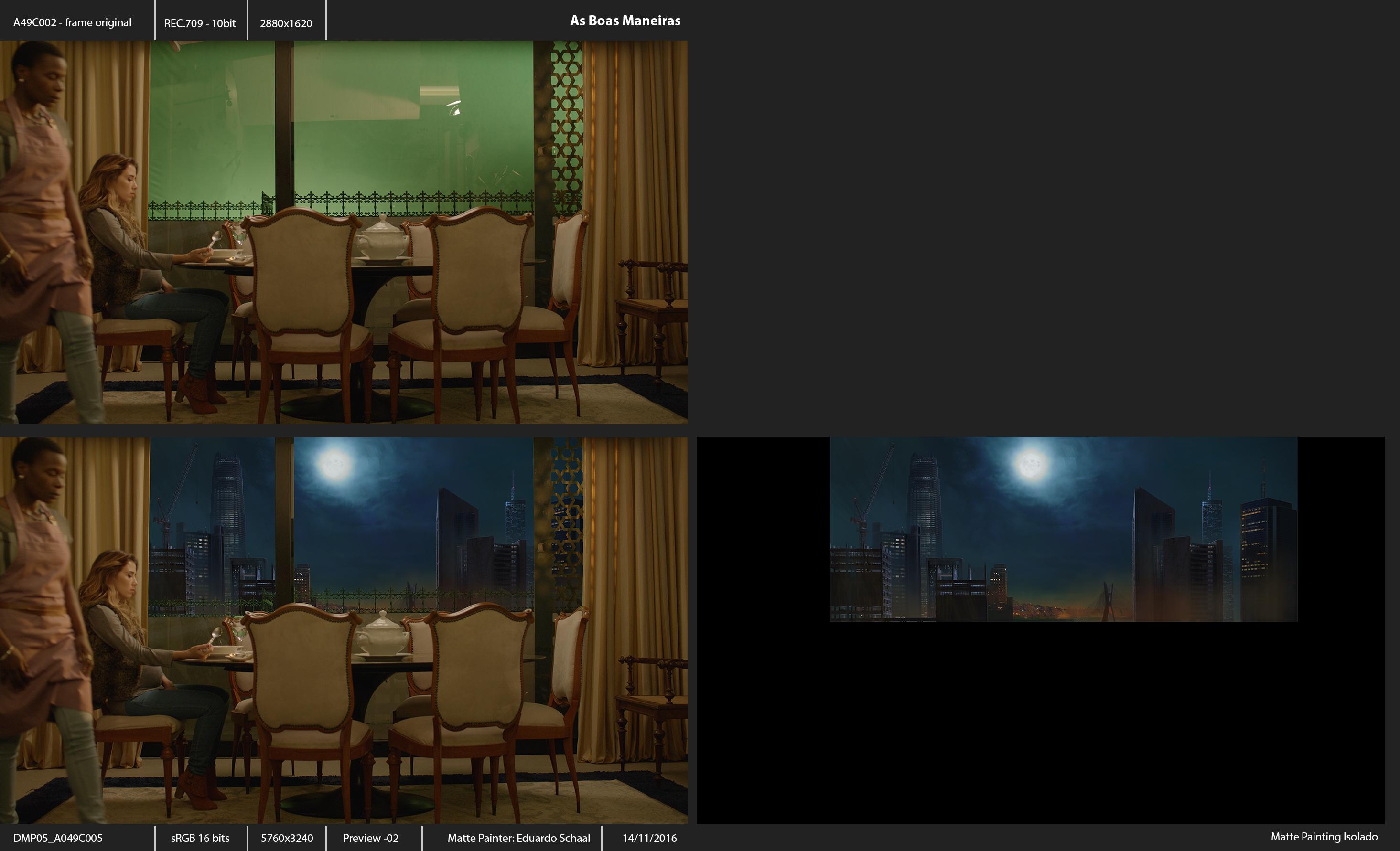
Good Manners is a very topical story in the contemporary climate. Did you discuss the gender side of the story or was it more spontaneous and natural decision?
It was always a very feminine story, like most folklore tales usually are, but as it became clear it was also a family story, we felt Ana and Clara should really fall in love. The intensity of their relationship was not in our first version of the script. We realized we wanted to talk about love, desire, instinct and feelings that are not rational. And since this was also a fantasy film, we felt we could break the old class barriers and even be somehow romantic.
Recife filmmaker Gabriel Mascaro tackled the gender stereotypes and kind of disrupted the conventions in Neon Bull. Good Manners goes right of the bat after the LGBT topic. Why is this topic discussed and approach by Brazilian filmmakers now?
Equal rights have been an important discussion all around the world in the last decades, and it’s still essential now as we face a moment of political conservatism in several countries including Brazil. The characters in the movie are outcasts and have to deal with the idea of what it is to have “good manners“. Sometimes they part ways with what could be considered normative behavior, and that becomes part of them. We never forced anything into the film, but the formation of this out-of-the-norm family was an important part of our story.
Good Manners resembles Guillermo del Toro´s storytelling in Pan´s Labyrinth in terms of mixing various elements and introducing gruesome aspects into fairy-tale setup. He explicitly acknowledges the two different worlds even though they are seamlessly conjoined. Your approach is a bit different, the two worlds lies within the story world in the class divide but also on the outside as a marriage of “low”, genre, and “high”, drama, storytelling. Were you conscious from the beginning of the project about this couplings of opposites? They appear in several pairs throughout the story.
Yeah, that’s again the idea of contrast. It was not something we rationalized from the beginning, but it became clearer each day for us. The poor and the rich, the black and the white, the boy and the beast, the periphery and the center. As lovers of genre, we never though of it as a “low“. We’re aware of the so-called “elevated genre“ discussion, but we always treated this aspect of the film with love, and not as an opposition of regular drama. We did develop the mysteries of the film slowly, so one might have the impression that it becomes more genre as it goes, but for us all fantasy clues were there from the first scene.
To what extend does Good Manners reflect the actual situation in the Brazilian society?
Brazil developed as a colony since 1500, and it was the last American country to abolish slavery. It’s still a very unequal society and racism is still an issue. It’s also religiously mixed and superstitious. We tried to include our perception of Brazil and São Paulo in the film, but it’s important to mention that, as part of middle class, we are in a way privileged and perceived as white in our society.
The male element is mostly excluded until after the introduction of Joel, but he is not the usual male type as a beast-man. What was your stance on male element in Good Manners and can we apply a psychoanalytical reading on the character of Joel?
Marco Dutra: Men vanished from the story little by little. In the first version, Joel’s father was an important presence. There was also a janitor in Ana’s building that interrupted the women’s relationship, and Doctor Ciro’s face actually appeared in some shots that we eventually didn’t use in the final cut. We simply felt the presence of adult men should be peripheral – basically, an absence. The two young boys, Joel and Maurício, represent a masculinity that is not yet fully developed. I did psychoanalysis for several years and am a big fan of it, so I can’t help creating and also reading psychoanalytical subtexts. But that was never a big part of our premises and the readings should belong to each viewer.
Juliana Rojas: We realized that the story should be focused on Clara’s journey and her relationship with Ana and Joel. Our characters were women and children resisting in a patriarchal society.
Good Manners is Brazilian and French co-production. Brazilian co-productions are usually happening within the Ibero-American countries, partnership or funds. How did France come into the picture?
Our producer, Sara Silveira, has lived in France and has a long relationship with the country. She introduced us to French sales company Urban, who worked with us on Hard Labor. For Good Manners, Frédéric Corvez and Clément Duboin got involved as co-producers from the beginning. We ended up getting support from CNC, Canal+ and ZDF/Arte, and this was incredibly helpful as it allowed us to work with Mikros Image and Atelier 69 in the werewolf special effects, as well as to do an important part of post-production, especially color grading and sound mix, in Paris. The expertise of the French team was very valuable to the project.
You mentioned that Caucasian Chalk Circle by Bertolt Brecht as one of the influences. That is a bit surprising reference. Can you elaborate on a bit more?
Marco Dutra: Both of us worked, in different moments of our lives, with a São Paulo theater company called Companhia do Latão. Helena Albergaria, the main actress in Hard Labor, is a big friend and part of the company. Their work is deeply influenced by Brecht’s theories, and they staged some of his plays as well as groundbreaking original work. I was working in their video department when Sergio de Carvalho, the director, decided to stage Caucasian Chalk Circle. Eventually it would be decided that the Prologue scene would be a short documentary film played before the play. So I got to be closely involved with the process of this play and fell in love with it. The play’s a retelling of the Solomon tale, in which a judge has to decide who is the real mother of a child. In five acts, we follow Grusha as she runs through a country on fire during war while taking care of the baby the queen left behind – a child who does not belong to her. It is an amazing tale about love and responsibility and property – what should belong to whom? So we came back to it and sucked from that experience while developing Good Manners. There is also, of course, Brecht’s methods and his ideas on political and epic theater, which gave us formal ideas that appear in a lot of our work.
Juliana Rojas: We also are inspired by the use of music in Brecht’s work, specially the ones with Kurt Weill, as a tool that can bring a certain character’s point of view and an interesting rupture in the narrative.
What other influences are in the mix? Disney?
Disney was always an inspiration for several reasons: the mix of genres, the use of color, the approach to the dark sides of fairy tales. We also love Jacques Tourneur for his use of shadow and suggestion, and Night of the Hunter for its gothic narrative and the protagonism of children.
The character of Ana suffers from somnambulism. I wonder whether this is reference to something concrete or whether you used as a storytelling device?
We were interested in seeing how the full moon would affect Ana considering the complex nature of her pregnancy. For us, it is like she is possessed.
At several points, we can see echoes of Rosemary´s Baby, Carrie or even Frankenstein, the mob with pitchforks and torches. However, I wonder what is a conscious choice, or homage or pastiche of you will, and what just happened more intuitively without you planning to plant reference or wink at audience.
Most of the narrative choices were natural and unconscious. Sometimes they even come from a source that was already homage to something else. The mob scene, for instance, makes us think first in Disney’s Beauty and the Beast, even though we love Frankenstein, the inspiration comes from Disney in this case. We rarely talk about things as homage or pastiche, because our discussions are always about character rather than form. But of course each genre has its grammar and history, so we’re bound to recognize some of the elements.
How does a work on a film look like with two directors and two scriptwriters?
We share all the parts of the process, splitting only when very necessary for practical reasons. We met in 1999, at the beginning of film school, so ours is a relationship that matured from film to film and year to year. It changes the dynamic of the set because there is conversation between the two of us as well as with the cast and crew, but we found that the team is able to understand this dynamic and still be participative and creative.
You had very experienced cinematographer on board, Rui Poças, who lensed Miguel Gomes´ Tabu and The Face You Deserve, João Pedro Rodriguez´ The Ornithologist, Lucrecia Martel´s Zama. How did this partnership come about?
We love Rui’s work, especially in João Pedro’s To Die Like a Man. We felt he would understand the tone and mood of the film we wanted to build. Indeed, he was able to help us in creating the magic atmosphere of the movie and there is no question that the visuals of it own a lot to Rui.
Have you had a clear vision what the visual of the story will look like or did you have to work to it through a process?
Because of its fantastic nature and the need for special visual effects, the movie took a lot of preparation. We did storyboards, videoboards, concept designs for mood and character... So it took shape little by little during writing but especially on preproduction, when Fernando Zuccolotto and Rui Poças were working with us day by day. The French companies Mikros Image, CGI, and Atelier 69, animatronic also shared every step of their process with us. It was important to coordinate all these elements so the film could find its unity and shape.
Brazilian cinema had a pretty successful run last year. Are we seeing a renaissance in the Brazil cinema?
Yes. The quality and amount of Brazilian films circulating around the world owns a lot to an important development of public investment funds. There is always a possibility that these funds get discontinued because of political instability, but the area as a whole has been growing and a huge amount of people benefit from this in all classes of our society.
Will you be teaming up again for a possible future project?
Yes. We are developing a haunted house film to shoot in 2019, possibly in the USA, and also a zombie-themed television series.



